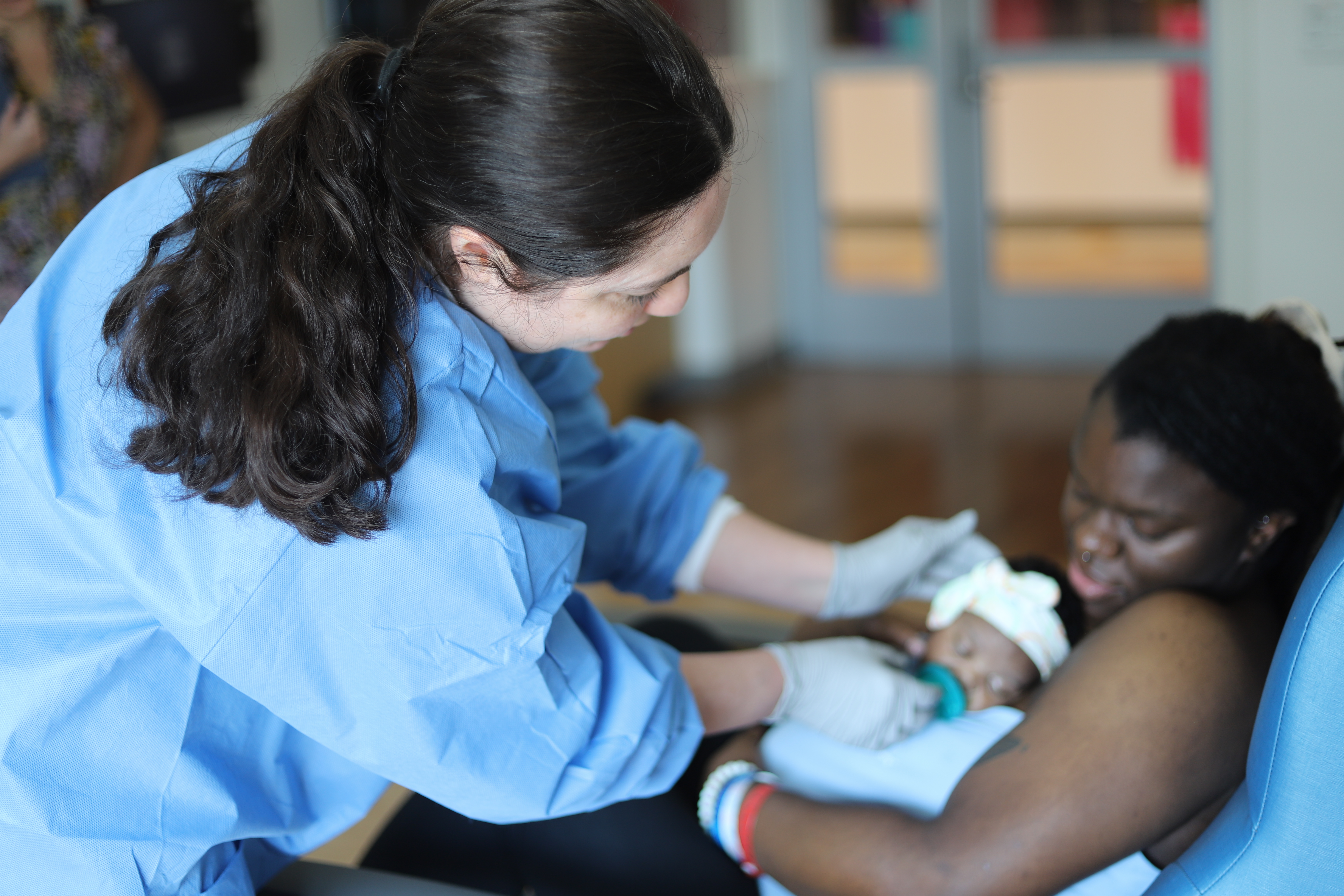Kangaroo care: A guide for new parents
- Category: General Health, Parenting
- Posted on:

We’re shining a light on the practice of skin-to-skin contact (also known as “kangaroo care”) and its many benefits for newborns and their parents. At Children's Hospital New Orleans, we're strong advocates for this simple yet deeply impactful method of holding your baby close, skin-to-skin, to build an early bond and promote vital health benefits.
“Kangaroo care is a very important therapy for both moms and dads to provide for their baby. The benefits are numerous, including infant-parent bonding and improved health and neurodevelopmental outcomes for infants. We encourage all families to participate in this practice when possible,” said Christy Mumphrey, MD, neonatologist and co-chair of the NICU developmental committee team at Children’s Hospital New Orleans. 
Here are some essential insights every new parent should know about kangaroo care:
- Parents can start kangaroo care as soon as it is safe to do so: The World Health Organization now recommends that parents start kangaroo care immediately after birth, especially with small and preterm babies. This early and sustained contact should be maintained as much as possible each day and is crucial for the baby's development and well-being.
- Boost health and bonding: Kangaroo care offers vital advantages for both short- and long-term health. It aids in the baby's physiological regulation and strengthens the emotional bond between the baby and parents. According to the National Institutes of Health, skin-to-skin contact within the first hour of birth supports the baby’s developmental trajectory in significant ways.
- Share your antibodies: Research indicates that early skin-to-skin contact can pass crucial antibodies from the parent's mature immune system to the baby. These antibodies help strengthen the baby’s immune system, providing a layer of protection against infections and diseases.
- Keep calm and connect: Kangaroo care has a remarkable ability to soothe babies, promote sleep and keep them calm. Parents often notice a significant reduction in crying when they practice skin-to-skin contact, making it a great tool for nurturing their child and easing their own parental anxieties.
- Ease into breastfeeding: Kangaroo care often leads to an improved ability to initiate breastfeeding. The close contact can help newborns latch on more easily and effectively, making breastfeeding a smoother experience for new mothers and a stronger nutritional start for infants.
- Not just for moms: It’s important to know that kangaroo care isn’t just for mothers. Dads, too, can participate in this bonding experience. Skin-to-skin contact from fathers also provides many benefits and can foster a deep connection between father and baby.
- Beneficial for high-risk newborns: Kangaroo care can be especially beneficial for newborns with serious conditions, including cardiac issues. Children’s Hospital New Orleans participated in a study that underscores the effective implementation of kangaroo care within a pediatric cardiac intensive care unit. This research found kangaroo care to be a straightforward, cost-effective method that can mitigate some adverse effects experienced by infants and parents in these challenging situations, potentially leading to improved neurodevelopmental outcomes for the babies.
- How to get started: Kangaroo care is a relatively straightforward process that’s all about maximizing skin-to-skin with your little one. If your baby is hospitalized, ask your nurse for help with providing kangaroo care for your baby. For moms and dads who are home with their baby, here’s how to get started, broken down into a few simple steps:
- Before you begin, ensure the environment is comfortable. A cozy space is crucial since your baby will be in direct contact with your skin, helping them maintain their body temperature.
- Remove your baby’s clothing, leaving them in just their diaper if you prefer, to maximize skin-to-skin contact. As a parent, wear a loose, open-front shirt (or remove your shirt if comfortable) so you can easily place your baby against your skin.
- Gently place your baby on your chest, making sure their head is turned to one side for easy breathing. Their body should be straight and centered against you.
- Use a soft, lightweight blanket to drape over your baby’s back for added warmth and privacy. This also helps create a serene environment that mimics the security of the womb.
- Aim to maintain this skin-to-skin contact for an hour at a time, as it takes a while for your baby to fully benefit from the calming and bonding effects. However, any amount of time is beneficial. Try to practice kangaroo care several times a day to strengthen your bond and support your baby’s development.
“When I first held my daughter skin-to-skin in the Children's Hospital New Orleans NICU, it felt like everything was finally right, as if she knew I was her mommy and we were in this together. Initially, I didn't know what kangaroo care was, but the medical team was so helpful in teaching me its importance. It has been a wonderful bonding experience, and I hope every parent has the chance to try it,” said Savanna Buller, a new mother who recently delivered with us.
Kangaroo care is a powerful practice that nurtures and benefits newborns in countless ways. We encourage all parents to embrace this nurturing method of care. Visit our Parenting Center website for more ideas, activities and new parent classes that promote early bonding.


